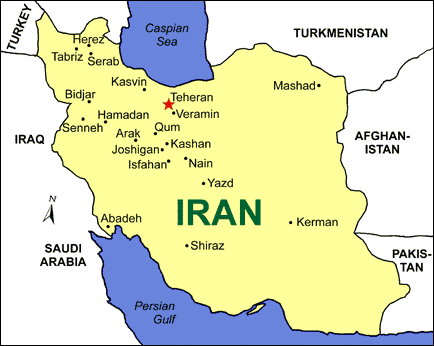Oriental Rugs and Rug Weaving in Iran
Historically, Iran ("Persia" up until 1934) has been the source of a very wide variety of rug designs and qualities. Probably the bulk of the Oriental rugs sold worldwide from just after WW I through the 1950's came from Persia/Iran. So many rugs have come from Iran for so long that "Persian rug" and "Oriental rug" are synonymous terms to many people. In fact, knowledgeable rug people are careful to differentiate the two identifications. "Persian design rugs" can come from India, Pakistan, China, or elsewhere, but "Persian rugs" come only from Iran.
Traditionally, many Iranian rugs have been sold in Europe and America by dealers of Iranian extraction. This has led to a common (and sometimes carefully nurtured) belief that Iran produces the "best" Oriental rugs. Indeed, there are magnificent old and new rugs from Iran, but there are as many poorly made, junky old and new pieces from Iran as from Turkey, Afghanistan, India, or elsewhere. A particular country of origin is in no way a guarantee of quality. A rug customer needs the ability to critically evaluate on its own merits any rug offered for possible purchase.
Iranian production runs the gamut from coarsely woven nomadic and village types like Shiraz, Kurd, Hamadan, and Herez, to very finely made types like Isfahan and some Tabriz, Nain, and Qum rugs. Iranian production "gentrified" in the 1970's, as oil revenue produced a wealthy Iranian middle class and a demand for high quality handwoven rugs.
The embargo on importing rugs from Iran into the US ended in March, 2000. Good quantities of Iranian rugs are available in wholesale and retail markets in America today, with types and quality ranging all over the map as US dealers reestablish connections with Persian sources that had been dormant for over 15 years. As more American dealers explore the offerings from Iran, expect to see better selected Iranian goods available.
Iranian rug prices reached historic highs in the early 1980's when it seemed the Iranian Revolution of 1979 would end rug exports. In fact, prices have declined since then to the point where a reasonable quality Iranian rug purchased from a reliable dealer can represent very good value. As with every weaving area, Iran produces some great rugs today, but also many average quality rugs, and not a few junky and ugly ones. Just because the rug you're considering was made in Iran doesn't mean it's a wonderful piece you should snatch up. Evaluate the rug carefully, educate yourself about rugs in general, and try to comparison shop.
Rugs from Iran….
Rugs similar to these are usually in stock.
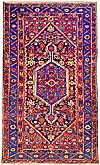
HAMADAN |
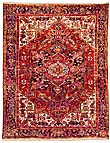
HEREZ |
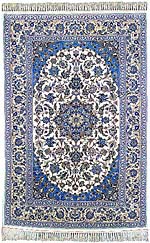
ISFAHAN |
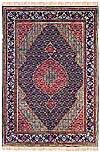
TABRIZ |

BIJAR |
Rug Weaving in Persia about 1900….
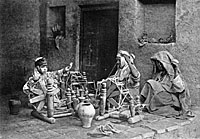 Spinning wool into yarn, c. 1900 (J.K. Mumford). Spinning wool into yarn, c. 1900 (J.K. Mumford).Similar wheels are still used in Turkey and Afghanistan. |
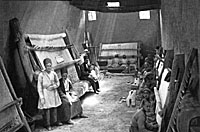 A weaving workshop in Tabriz A weaving workshop in Tabrizabout 1900 (J.K. Mumford). |
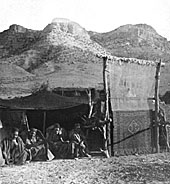 A Shiraz rug on the loom in southern A Shiraz rug on the loom in southernPersia, c. 1900 (J.K. Mumford). |
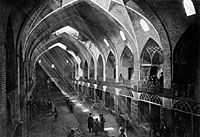 A rug bazaar in Iran about 1900 (J.K. Mumford). A rug bazaar in Iran about 1900 (J.K. Mumford). |

